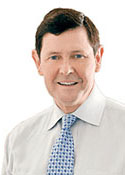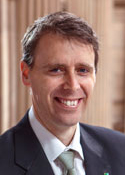Menzies
Margin: Liberal 14.4%
Region: Eastern Melbourne, Victoria
In a nutshell: Kevin Andrews’ seat of Menzies has been held by the Liberals since its creation in 1984 – never more comfortably than after the 2013 election.
Candidates in ballot paper order

|
ANTONY JOHN HULBERT RAMON ROBINSON DAVID CLARK KEVIN ANDREWS RICHARD CRANSTON ADAM RUNDELL JAY FRANKLIN STEPHEN MAYNE |
The safe Liberal seat of Menzies covers eastern Melbourne suburbs from Bulleen at the western end through Templestowe, Doncaster, Donvale and Warrandyte to Wonga Park and Croydon North at the eastern end. It was created with the expansion of parliament in 1984, prior to which the area had been divided between Diamond Valley in the west and Casey in the east. At the time of its creation it extended northwards to Eltham, but this area was exchanged for the Warrandyte end of the electorate in 1996. The entire area is solid or better for the Liberals, who have held the seat at all times by margins of no less than 5.4%. The present margin of 14.5% is the highest in the electorate’s history, following consecutive swings of 2.7% against the statewide trend in 2010 and 5.8% in 2013.
The inaugural member for Menzies was Neil Brown, who had held Diamond Valley from 1969 to 1972 and again from 1975 to 1983, having lost the seat with the defeats of Coalition governments on both occasions. Established in the safe new seat of Menzies from 1985, he served as the party’s deputy leader under John Howard from 1985 to 1987. Brown retired in February 1991 and was succeeded by Kevin Andrews, who won the by-election held the following May without opposition from the Labor Party.
Noted for his religious convictions and social conservatism, Andrews came to prominence when he spearheaded a successful push to overturn Northern Territory euthanasia laws in federal parliament. He was promoted to the outer ministry as Ageing Minister after the 2001 election and then to cabinet in October 2003, serving first as Workplace Relations Minister during the introduction of WorkChoices and then as Immigration Minister from January 2007 until the government’s defeat the following November, in which time he was dogged by the Muhamed Haneef affair.
Andrews was dropped from the Coalition front bench after the November 2007 election defeat, but returned as Shadow Families, Housing and Human Services Minister when Tony Abbott became leader in December 2009. He had played a key role in Abbott’s rise to the leadership, having made a tokenistic challenge to Turnbull’s leadership a week earlier in protest against his support for the Rudd government’s emissions trading scheme. Andrews was back in cabinet following the election of Abbott’s government in September 2013 in the role of Social Services Minister, and won promotion to Defence Minister in December 2014. When Malcolm Turnbull challenged Tony Abbott for the leadership in September 2015, Andrews contested the deputy leadership ballot against Julie Bishop in solidarity with Abbott, but he was defeated by 70 votes to 30, and subsequently dropped from the ministry.
Among the candidates facing Andrews is Stephen Mayne, shareholder activist and founder of Crikey, who says he is running as a “pro-Turnbull liberal independent”.
Analysis by William Bowe. Read William’s blog, The Poll Bludger.


